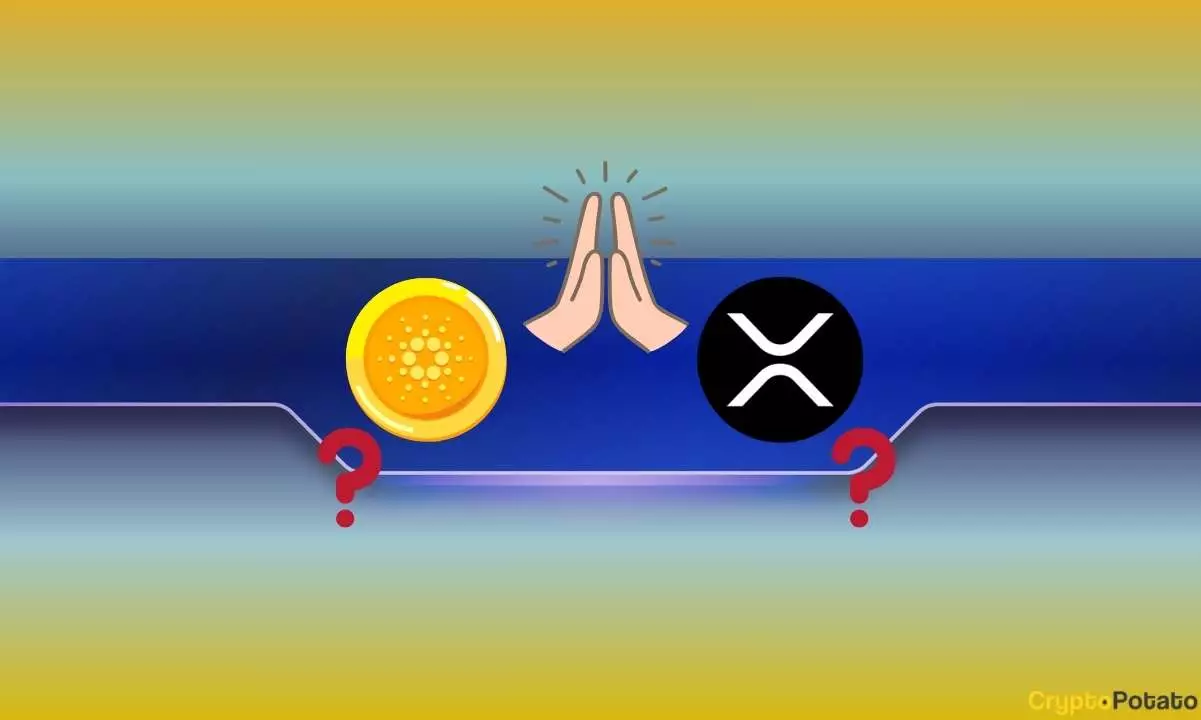In a significant development within the cryptocurrency landscape, recent discussions between Charles Hoskinson, the founder of Cardano, and Brad Garlinghouse, CEO of Ripple, signify a potential thaw in their previously tumultuous relationship. This shift is noteworthy given the backdrop of past tensions, during which Hoskinson openly criticized parts of the XRP community. His recent remarks, expressing admiration for Garlinghouse’s leadership and a desire to collaborate, suggest a strategic pivot—one that may reshape interactions in the broader digital currency ecosystem.
Hoskinson’s overtures toward Ripple may be seen as a proactive effort to foster unity within the often-fractured cryptocurrency sector. He emphasized the need for collaboration among different blockchain projects and posited that now is the time for collective action to establish equitable regulations. Garlinghouse echoed this sentiment, reinforcing the importance of communication and cooperation as the crypto community seeks to navigate regulatory challenges.
Despite their contrasting paths, both leaders appear to recognize the potential benefits of aligning their interests. Their conversations touch on technical advancements and innovations within their respective ecosystems—specifically, the focus on Cardano’s privacy-centric sidechain, Midnight, alongside discussions about XRP. These technical dialogues signal a mutual respect for each other’s projects and an intent to explore synergistic opportunities.
A noteworthy aspect of their conversation points toward regulatory developments. Hoskinson’s involvement in discussions with the Trump administration underlines a broader ambition to influence regulatory frameworks that govern cryptocurrency. Both him and Garlinghouse appear aligned in their objectives to create clearer rules for the digital asset space, suggesting their partnership could extend beyond mere technological collaboration to include broader advocacy for favorable regulatory outcomes. In an industry notorious for its lack of cohesive regulation, such alliances are essential for advancing the interests of more mainstream acceptance.
The renewed friendship between Cardano and Ripple stands as an unexpected turnaround. Just a year prior, Hoskinson criticized the XRP community for its perceived toxicity, advocating for a more civil and productive discourse within the crypto industry. His change of heart is not only indicative of personal growth but also a recognition that the challenges faced by the crypto sector are better addressed collectively rather than in isolation. His recent apology signifies a strategic shift that may facilitate deeper partnerships with Ripple and potentially other networks as well.
As both teams engage in discussions and explore various avenues of cooperation, the crypto community watches closely. The potential for collaborative initiatives that merge the technological strengths of Cardano and Ripple could lead to groundbreaking advancements in blockchain applications. With mutual respect established, the prospects for collaboration seem promising as they work toward a more inclusive and regulated environment. The overarching theme in this narrative is one of transition—the evolution from rivalry to cooperation has the potential to redefine relationships and set precedents within the crypto landscape. As both Hoskinson and Garlinghouse navigate their roles in this process, the industry may very well benefit from their combined vision for a more united future.

